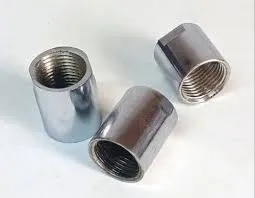-
Cangzhou Yulong Steel Co., Ltd.
-
Phone:
+86 13303177267 -
Email:
admin@ylsteelfittings.com
- English
- Arabic
- Italian
- Spanish
- Portuguese
- German
- kazakh
- Persian
- Greek
- French
- Russian
- Polish
- Thai
- Indonesian
- Vietnamese
- Zulu
- Korean
- Uzbek
- Hindi
- Serbian
- Malay
- Ukrainian
- Gujarati
- Haitian Creole
- hausa
- hawaiian
- Hebrew
- Miao
- Hungarian
- Icelandic
- igbo
- irish
- Japanese
- Javanese
- Kannada
- Khmer
- Rwandese
- Afrikaans
- Albanian
- Amharic
- Armenian
- Azerbaijani
- Basque
- Belarusian
- Bengali
- Bosnian
- Bulgarian
- Catalan
- Cebuano
- China
- China (Taiwan)
- Corsican
- Croatian
- Czech
- Danish
- Esperanto
- Estonian
- Finnish
- Frisian
- Galician
- Georgian
- Kurdish
- Kyrgyz
- Lao
- Latin
- Latvian
- Lithuanian
- Luxembourgish
- Macedonian
- Malgashi
- Malayalam
- Maltese
- Maori
- Marathi
- Mongolian
- Myanmar
- Nepali
- Norwegian
- Norwegian
- Occitan
- Pashto
- Dutch
- Punjabi
- Romanian
- Samoan
- Scottish Gaelic
- Sesotho
- Shona
- Sindhi
- Sinhala
- Slovak
- Slovenian
- Somali
- Sundanese
- Swahili
- Swedish
- Tagalog
- Tajik
- Tamil
- Tatar
- Telugu
- Turkish
- Turkmen
- Urdu
- Uighur
- Welsh
- Bantu
- Yiddish
- Yoruba

Dec . 11, 2024 03:43 Back to list
Aluminum Concentric Reducer Specifications and Applications for Pipe Fitting Solutions
Understanding Aluminum Concentric Reducers A Comprehensive Overview
Aluminum concentric reducers are essential components used in various piping systems across multiple industries. Their primary function is to connect two pipes of different diameters while maintaining a consistent flow of fluid, whether it's gas, water, or other materials. The design and application of these reducers are crucial for ensuring the efficiency and effectiveness of a piping system. In this article, we will explore the features, benefits, applications, and considerations related to aluminum concentric reducers.
What is a Concentric Reducer?
A concentric reducer is a type of piping fitting that features a symmetrical transition between two different diameters. Unlike eccentric reducers which have a flat edge, concentric reducers maintain the centerline of both pipe ends, allowing for a smooth and uniform flow path. This design is particularly valuable in applications where the flow’s velocity and pressure must be controlled by minimizing turbulence.
Advantages of Aluminum Concentric Reducers
1. Lightweight One of the most significant benefits of using aluminum in concentric reducers is its lightweight nature. Aluminum is lighter than many other metals, which makes shipping and installation easier and cost-effective.
2. Corrosion Resistance Aluminum has excellent resistance to corrosion, which extends the lifespan of the fitting and reduces maintenance costs. This property makes it suitable for use in harsh environments where moisture and other corrosive elements are present.
3. Cost-Effectiveness Aluminum fittings often cost less than their stainless steel or copper counterparts, making them a budget-friendly option without compromising quality or performance.
4. High Strength-to-Weight Ratio Aluminum has a high strength-to-weight ratio, allowing it to handle high pressure and temperature variations without risk of deformity or failure.
5. Versatility Aluminum concentric reducers can be used in various applications across different industries, including HVAC, water supply, chemical processing, and food and beverage manufacturing.
Applications of Aluminum Concentric Reducers
Aluminum concentric reducers find utility in a wide range of applications, including
aluminum concentric reducer

- HVAC Systems Used for air conditioning and heating systems, they help in connecting ductwork of different diameters to ensure adequate airflow and system efficiency. - Water Supply Networks In municipal water systems, reducers enable the connection of pipes with varying diameters, facilitating the distribution of water across urban areas.
- Chemical Processing In the chemical industry, these reducers help manage the flow of corrosive fluids and gases, ensuring safety and adherence to regulatory standards.
- Industrial Manufacturing Aluminum reducers are employed in pipelines that transport different materials, assisting in maintaining the required flow rates and preventing blockages.
Considerations When Choosing Aluminum ConcentricReducers
When selecting aluminum concentric reducers for your project, consider the following factors
1. Pipe Diameter Ensure the reducer’s size matches the diameters of the pipes being connected to allow for optimal flow.
2. Pressure Ratings Assess the pressure requirements of your system to choose a reducer that can withstand the necessary levels without failure.
3. Material Specifications While aluminum is generally suitable for many applications, confirm that it meets specific requirements, especially in industries with stringent safety and quality standards.
4. Temperature Resistance Consider the operating temperature of your system and ensure the aluminum reducer can handle potential thermal expansion issues.
5. Installation Compatibility Ensure that the reducer will fit well within your existing piping system and can be easily installed without requiring extensive modifications.
Conclusion
Aluminum concentric reducers are critical components that play a significant role in efficient fluid and gas transport within various industries. Their lightweight, corrosion-resistant, and cost-effective properties make them an attractive choice for many applications. However, careful consideration of specific system requirements is essential to maximize their benefits and ensure reliable performance. As industries continue to evolve, the demand for aluminum concentric reducers is likely to grow, highlighting the need for ongoing innovation and quality improvement in this vital component of piping systems.
Latest news
-
ANSI 150P SS304 SO FLANGE
NewsFeb.14,2025
-
ASTM A333GR6 STEEL PIPE
NewsJan.20,2025
-
ANSI B16.5 WELDING NECK FLANGE
NewsJan.15,2026
-
ANSI B16.5 SLIP-ON FLANGE
NewsApr.19,2024
-
SABS 1123 FLANGE
NewsJan.15,2025
-
DIN86044 PLATE FLANGE
NewsApr.19,2024
-
DIN2527 BLIND FLANGE
NewsApr.12,2024
-
JIS B2311 Butt-Welding Fittings LR/SR 45°/90° /180°Seamless/Weld
NewsApr.23,2024











